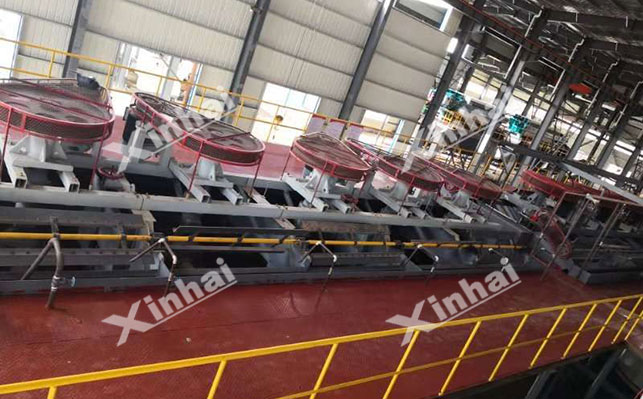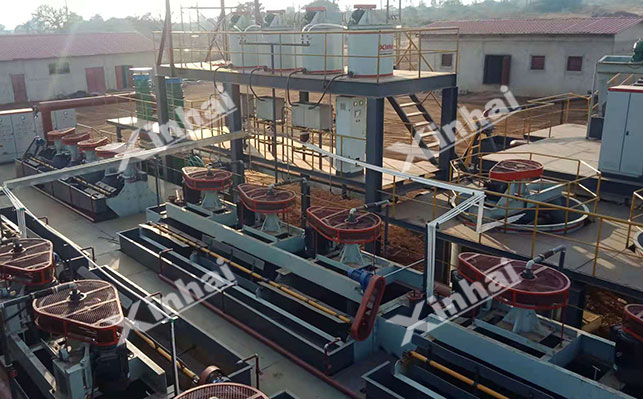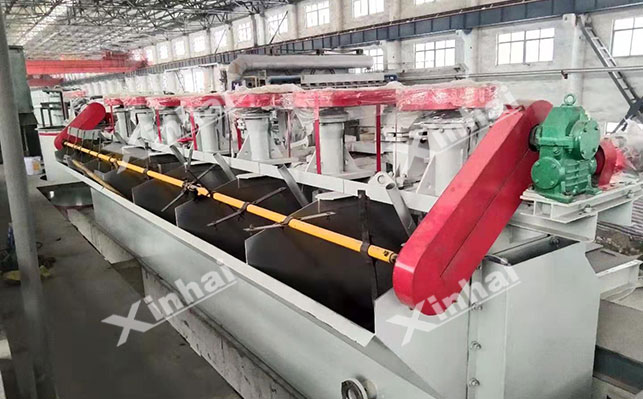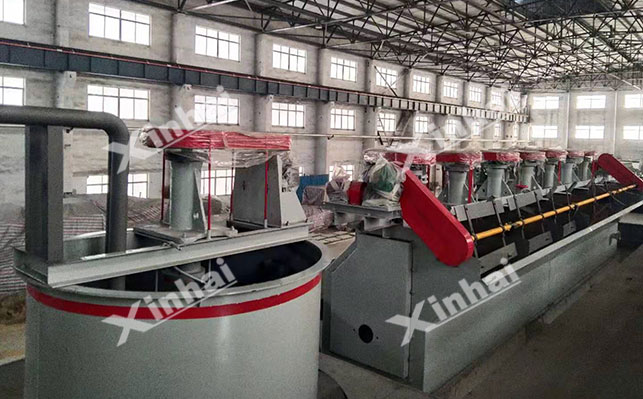
15311826613
Click to add WeChatAs an important barium-containing mineral, barite is widely used in oil drilling, chemical industry, medicine and other fields. Since barite often coexists with minerals such as calcite, fluorite, and quartz, an effective flotation separation method is essential for obtaining high-grade barite concentrate. The following will introduce the common barite flotation methods in detail.

Positive flotation is a method of directly flotating barite and suppressing gangue minerals. By adding a highly targeted collector, the surface of barite is hydrophobic and floats, while the gangue minerals remain in the slurry. The process of this method is relatively simple and easy to operate and control. Commonly used collectors are fatty acid collectors (oleic acid, sodium oleate, etc.), which have a good collection effect on barite in an alkaline slurry environment (pH 9-11). At the same time, it is often necessary to add an adjuster to adjust the pH value of the slurry and add an inhibitor to inhibit the gangue minerals.
The barite positive flotation method is mostly suitable for treating ores with relatively poor floatability of gangue minerals and less complex intercalation relationship between barite and gangue minerals.

Reverse flotation is a method of flotating gangue minerals and inhibiting barite. In contrast to positive flotation, the gangue minerals are floated by adding a suitable collector, and the barite remains at the bottom of the tank. This method can effectively remove harmful impurities in the ore and improve the purity of the barite concentrate.
If the barite flotation is to remove carbonate gangue such as calcite, an amine collector can be used to float calcite in an acidic slurry environment (pH 5-7). At the same time, inhibitors (such as zinc sulfate, sodium sulfite, etc.) need to be added to inhibit barite.
Barite reverse flotation is mostly suitable for treating ores with good floatability of gangue minerals, and barite and gangue minerals are closely coexisting, which are difficult to be effectively separated by positive flotation.

Priority flotation is a method of flotation recovery of different minerals in turn according to the difference in mineral flotability. In the barite flotation process, the minerals with good floatability are first floated, and then other minerals are gradually floated to finally obtain barite concentrate. This method can achieve the separate recovery of multiple minerals and improve the comprehensive utilization rate of resources. In the flotation process, it is necessary to accurately grasp the floatability differences of different minerals, reasonably select flotation reagents and control flotation conditions. For polymetallic ores containing barite, fluorite and calcite, the fluorite can be first floated by adjusting the reagent, and then the conditions can be adjusted to float calcite, and then the barite can be floated.
Barite priority flotation is mostly suitable for complex barite ores containing multiple valuable minerals and various minerals with obvious differences in floatability. It can maximize the recovery of various useful minerals and reduce resource waste.
Mixed flotation is a method of floating two or more minerals with similar floatability together and then separating them. In barite flotation, if the floatability of barite is similar to that of some gangue minerals or other valuable minerals, mixed flotation can be carried out first, and mixed concentrate can be obtained and then further separated. This method can simplify the flotation process and improve flotation efficiency.

During flotation, it is necessary to find a universal collector that can float the target minerals at the same time. For ores with similar floatability of barite and fluorite, fatty acid collectors can be used for mixed flotation in a neutral or weakly alkaline pulp environment. In the subsequent separation process, according to the difference in the properties of barite and fluorite, a suitable adjuster is selected to change the pulp properties for separation.
Barite mixed flotation is suitable for processing ores with similar floatability to barite and other minerals, and it is difficult to float them alone. Through mixed flotation, the number of flotation operations can be reduced and the cost can be reduced.
The above is an introduction to the common flotation methods of barite. In actual ore dressing plants, the selection of barite beneficiation methods needs to be based on the properties of the barite ore and the types of gangue minerals it contains. It is recommended to conduct beneficiation tests and design a suitable and reasonable barite beneficiation method through experimental analysis. At the same time, the required barite beneficiation equipment can also be given according to its process plan.